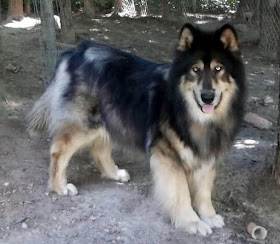The faunal evidence for
archaeological sites in Pennsylvania portrays prehistoric Native Americans as consummate
hunters and trappers. Discarded bones of mammals, birds and fishes retrieved
centuries later by archaeologists from rubbish middens (trash pits) attest to
the important roles that hunting and trapping played in the lives of these
people. The contents of prehistoric trash middens and dumps most always show
that deer, elk, bear and turkey due to their sheer body mass, were the more
prolific creatures harvested for meat protein. There are animal remains reported
from these trash dumps that are fewer in number and three of these are the subject
of this week’s blog.
Animal bones from an archaeological
context.
The wildcat, better known as the
bobcat, Lynx cf. rufus is an
animal found in the rugged
intermontane region of northern Pennsylvania where there are swamps and dense
forests. One can surmise that this fur bearing animal was trapped by Native
Americans for its pelt as the coat of fur is soft to the touch which made for
ideal bedding in the cold night of winter.
Bobcat
The native wolf of Pennsylvania Canis lupus was extirpated in the last century when the logging industry was in its heyday. Unlike the
bobcat, which is not a gregarious animal, wolf packs roamed the remote wilderness
of Pennsylvania. Early encounters with wolves are well chronicled in
Pennsylvania’s early history as they were a serious menace to farm animals and were shot on sight. Native Americans however trapped them for their thick coat of
fur and like the skins of bobcats, were tailored into clothing and bed covers.
Grey Wolf
The Indian dog Canis lupus familiaris /Canis familiaris has a bond with our pet
dogs of today as it has been shown genetically that all dogs are descendants of
the Gray Wolf as early as the Late Pleistocene when humans were using canids for
tracking and hunting game. Here in Pennsylvania and elsewhere, the common term
that is used to describe these cross-bred critters is “wolfdog” Canis lupus familiaris. It is not
surprising that the archaeological evidence for dogs is better represented in
the bone dumps of Pennsylvania than bobcats and wolves since the bond between
dogs and humans has great antiquity.
Indian Dog
The butchered remains of bobcats,
wolves and dogs that were eaten are mainly from Late Prehistoric and Contact
period Native American village dump sites in the lower Upper Ohio Valley of
southwestern Pennsylvania and the lower Susquehanna Valley of southeastern
Pennsylvania. In the former region, these remains are associated with
Monongahela habitation sites of the AD. 1000 – 1600 period that were occupied from
the Forks of the Ohio to the Pennsylvania/West Virginia border south of
Pittsburgh. The southeastern sites are mainly located in the Washington Boro
area south of Harrisburg and the Raystown Branch of the Juniata River, now
inundated by the Raystown Reservoir near Huntingdon. The Susquehannock Indians lived
in these valleys from circa AD. 1500 – 1675 and they were the people who
hunted, killed and consumed the animals herein described. The archaeo-faunal
record for the later Susquehannock dump sites from the 1680’s to the mid-1760’s
period is sparse and therefore cannot be summarized at this time.
We hope that you have enjoyed this
brief presentation on the archaeological evidence for wildcats, wolves and dogs
and their relationship to the Native American people who once lived in
Pennsylvania. Please join us again as we present other interesting and
fascinating topics on Pennsylvania
Archaeology in This Week in Pennsylvania Archaeology.









